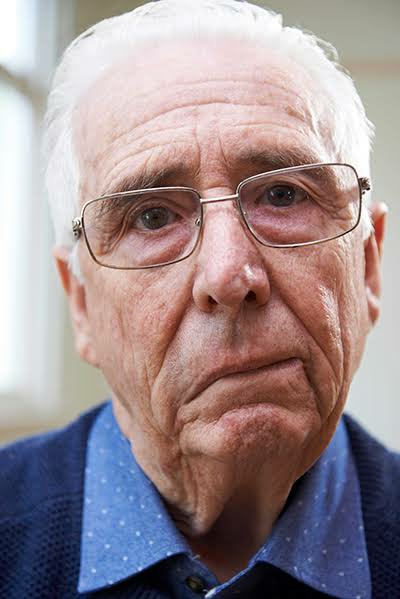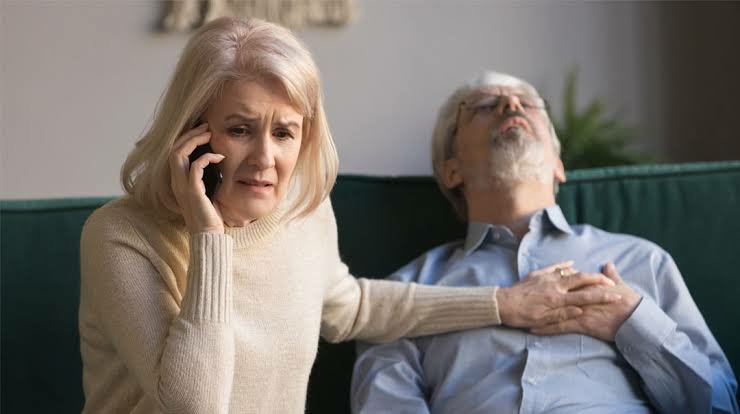Health
Things you must do to avoid having a stroke

A stroke occurs when a blockage or bleed of the blood vessels either interrupts or reduces the supply of blood to the brain. When this happens, the brain does not receive enough oxygen or nutrients, and brain cells start to die.
Stroke is a cerebrovascular disease. This means that it affects the blood vessels that feed the brain oxygen. If the brain does not receive enough oxygen, damage may start to occur. This is a medical emergency. Although many strokes are treatable, some can lead to disability or death.
At a recent health talk at The Lagos City Office of The Sun Publishing Limited, Dr Bertha Chioma Ekeh, Consultant Neurologist, Department of Medicine and Surgery, University of Uyo, shed more light on this health condition and outlined some lifestyle changes that can help one avoid getting a stroke. These are the highlights of her submissions.

Statistics/Impacts of stroke
One in four people will have a stroke in their lifetime. It is a public health emergency. Every six seconds, someone somewhere dies from a stroke. Six million people die every year from a stroke. It has a high mortality rate. There is also a large burden of disability on people who suffered from a stroke. The crude prevalence rate of stroke in urban Nigeria is 1.14/1000. Every Nigerian knows or is related to someone who has had a stroke before.
Causes and risk factors
Each type of stroke has a different set of potential causes. However, stroke is more likely to affect a person if they are overweight or obese, are 55 years of age or older, have a personal or family history of stroke, have high blood pressure and suffer from diabetes.
Other causes include high cholesterol, high blood sugar, heart disease, carotid artery disease, or another vascular disease, living a sedentary life, consuming alcohol excessively, smoking tobacco and use of illicit drugs.
Some studies have found that males have a higher risk of death from stroke than females. The risk of stroke mortality often increases due to age and demographic, rather than the biological differences between males and females.
According to a 2016 analysis, African American people have a significantly higher risk of experiencing a first-time stroke. They are also around 60 per cent more likely to experience another stroke within two years
Types of Stroke
Ischemic stroke: This is the most common type of stroke, making up 87 per cent of all cases. A blood clot prevents blood and oxygen from reaching an area of the brain. Hemorrhagic stroke: This occurs when a blood vessel ruptures. These are usually the result of aneurysms or arteriovenous malformations (AVMs)
Transient ischemic attack (TIA): This occurs when blood flow to a part of the brain is inadequate for a brief period of time. Normal blood flow resumes after a short amount of time and the symptoms resolve without treatment. Some people call this a mini-stroke.
TIAs only briefly interrupt the flow of blood to the brain. They are similar to ischemic strokes, in that they occur due to clots. People should treat them as medical emergencies, even if the symptoms are temporary. They serve as warning signs for future strokes and indicate a partially blocked artery or clot source in the heart. Over a third of people who experience a TIA have a major stroke within a year if they do not receive any treatment. Around ten to 15 per cent of people will have a major stroke within three months of experiencing a TIA.
Symptoms of Stroke
The symptoms of a stroke often appear without warning. Some of the main symptoms include confusion, difficulty speaking and understanding speech, a headache possibly altered consciousness or vomiting.

Other symptoms are numbness or an inability to move parts of the face, arm, or leg, particularly on one side of the body, vision problems in one or both eyes and difficulty walking, including dizziness and a lack of coordination.
Stroke can lead to long-term health problems. Depending on the speed of the diagnosis and treatment, a person can experience temporary or permanent disabilities after a stroke.
Some people may also experience bladder or bowel control problems, depression, paralysis or weakness on one or both sides of the body and difficulty controlling or expressing their emotions. Symptoms vary and may range in severity. Learning the acronym “FAST” is a good way to remember the symptoms of a stroke. This can help a person seek prompt treatment. FAST stands for:
•Face drooping: If the person tries to smile, does one side of their face droop?
•Arm weakness: If the person tries to raise both their arms, does one arm drift downward?
•Speech difficulty: If the person tries to repeat a simple phrase, is their speech slurred or unusual?
• Time to act: If any of these symptoms are occurring, contact the emergency services immediately.
The outcome depends on how quickly someone receives treatment. Prompt care also means that they would be less likely to experience permanent brain damage or death.
Challenges of treating stroke in Nigeria
Challenges of treating stroke in Nigeria include lack of awareness, poor knowledge, late presentation, lack of access to the hospital, lack of access to CT scans, the cost of treatment, lack of stroke units in hospitals and inadequate training of medical personnel about the medical condition.
Prevention
Primary prevention remains the most important factor in the reduction of the burden of stroke. “The best stroke is the stroke you never had,” Dr Ekeh reiterated. Hypertension is the commonest and most recognisable modifiable risk factor. Control of all the modifiable risk factors is very important and lifestyle modification is pertinent.
Secondary prevention involves knowing your blood pressure, blood sugar and cholesterol numbers. It is important to modify your lifestyle if you want to prevent stroke. These modifications include eating a healthy African diet, eating fresh food, eating unprocessed and minimally processed food, avoiding canned and packaged foods, consuming plant oils, eating fruits and vegetables and drinking water instead of soda and sweetened drinks.
Lifestyle changes also include changing your cooking habits. You should boil, steam, roast or grill your food, reduce salt intake, boil your rice without salt, cook without oil, reduce alcohol intake or eat well and drink a glass.
Non-Exercise Activity Thermogenesis (NEAT) is another way to reduce your risk of getting a stroke. Types of NEAT include using the stairs instead of the elevator, parking your car at a distance, walking up and down the stairs for the fun of it, and seeing off your visitors. You can also walk around while making calls, stand while watching the television, do house chores, work with standing tables instead of sitting for long and use a pedometer to count your daily steps. Sitting is the new smoking. Beware of the chair and sitting for too long.
Dangers of sitting
Sitting for too long causes reduced metabolism and burning of fat leading to obesity, especially around the waist, hypertension, diabetes and high cholesterol, all of which are risk factors for stroke. Leisurely moving is beneficial for your health.
Treatment
With a stroke, time lost is brain lost. It should be treated urgently like a heart attack. Because ischemic and hemorrhagic strokes have different causes and effects on the body, both require different treatments. Rapid diagnosis is important for reducing brain damage and enabling the doctor to treat the stroke using a suitable method for the type.
Ischemic stroke occurs due to blocked or narrowed arteries. Treatment tends to focus on restoring an adequate flow of blood to the brain.
Treatment starts with taking drugs that break down clots and prevent others from forming.
Blood leaking into the brain can cause a hemorrhagic stroke. Treatment focuses on controlling the bleeding and reducing the pressure on the brain. Treatment often begins with taking drugs that reduce pressure in the brain and control overall blood pressure as well as preventing seizures and any sudden constrictions of blood vessels.
Rehabilitation
A stroke is a potentially life-changing event that can have lasting physical and emotional effects. Successful recovery from a stroke will often involve specific therapies and support systems. These include:
Speech therapy: This helps with problems producing or understanding speech. Practice, relaxation, and changing communication styles can all make communicating easier.
Physical therapy: This can help a person relearn movement and coordination. It is important to stay active, even though this may be difficult at first.
Occupational therapy: This can help a person improve their ability to carry out daily activities, such as bathing, cooking, dressing, eating, reading, and writing.
Support groups: Joining a support group can help a person cope with common mental health issues that can occur after a stroke, such as depression. Many find it useful to share common experiences and exchange information.
Support from friends and family: Close friends and relatives should try to offer practical support and comfort after a stroke. Letting friends and family know what they can do to help is crucial while recovering from a stroke.
Rehabilitation is an important and ongoing part of stroke treatment. With the right assistance and the support of loved ones, regaining a normal quality of life is usually possible, depending on the severity of the stroke.
-

 Politics7 days ago
Politics7 days agoGov. Diri Totally Committed To Bayelsa’s Development, Growth, And Progress; George Turnah Tells Visiting Ogbia Ward 9 PDP Executives And Stakeholders
-

 News6 days ago
News6 days agoThere Is No Worker In Level 1 Step 1 Today In Nigeria, We Only Have Workers From Level 4 – Joe Ajaero
-

 Niger Delta6 days ago
Niger Delta6 days agoEx-Niger Delta Militant Hails Tinubu’s Reforms, Seeks Intensified Security Of Oil Installations
-

 Politics6 days ago
Politics6 days agoJUST-IN: Reinstated Edo State Deputy Governor, Philip Shaibu Kneels For Oshiomhole After Dumping PDP For APC
-

 News4 days ago
News4 days agoNYSC Member Allegedly Impregnates 5 Secondary School Students in Sokoto
-

 Sports6 days ago
Sports6 days agoChelsea offered TWO elite strikers as Victor Osimhen ‘agrees’ transfer
-

 Business4 days ago
Business4 days agoUPDATE: How NNPC Spent N7.3Billion On Entertainment In 16 Months NNPCL GMD, Mele Kyari
-

 News4 days ago
News4 days agoPolice Sergeant Shoots Father Dead After Drinking To Stupor




